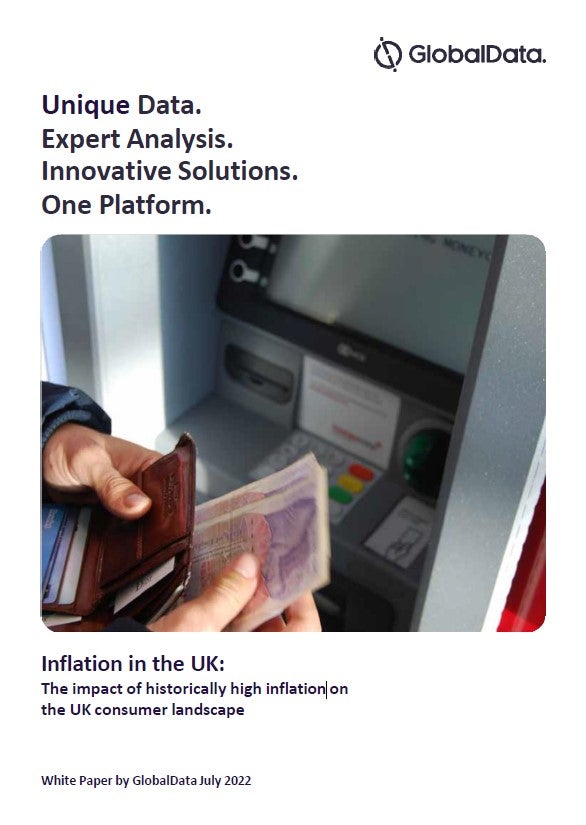
Recent data shows that bank holidays and celebration events have been boosting retail sales. In fact, UK retailers reported a Mother’s Day spending uptick in March. Whilst Easter spending looked a little different, as the cost of living crisis hit home and food prices in particular spiked, impacting overall sales, there were still opportunities to be found.
This is a welcome trend for businesses navigating a harsh economic climate, as there is a huge opportunity for companies with an e-commerce presence to benefit from this boost in spending throughout the rest of 2023.
How well do you really know your competitors?
Access the most comprehensive Company Profiles on the market, powered by GlobalData. Save hours of research. Gain competitive edge.

Thank you!
Your download email will arrive shortly
Not ready to buy yet? Download a free sample
We are confident about the unique quality of our Company Profiles. However, we want you to make the most beneficial decision for your business, so we offer a free sample that you can download by submitting the below form
By GlobalDataHowever, ECOMMPAY data shows almost three-quarters of consumers (71%) would abandon a purchase if their preferred checkout method wasn’t available. So, businesses must make sure they’re prepared to meet customer demand and payment preference to take full advantage of 2023’s remaining bank holidays and celebration days.
Identifying retail opportunities from bank holidays
May ushered in multiple opportunities to capitalise on any spending increases. The month kicked off with May Day, followed closely by the coronation weekend celebrations culminating in the extra bank holiday. The month was then wrapped up with the spring bank holiday. Looking at the rest of the year, there are many more holidays, celebrations and moments that bring about increased spending opportunities for retail consumers.
While consumers are spending more on everything from utilities to food, retailers will be hopeful across any celebration events that they can replicate the success of Mother’s Day, where they experienced an uptick in last-minute purchases of jewellery, perfume and flowers in particular.
Digital businesses may also choose to make the most of these special occasions by having pop-up stands and shops for face-to-face interactions with customers around key locations, all in a bid to make the most of these sporadic spending behaviours.
These spending behaviour patterns seen during bank holidays are an opportunity for retailers who must ensure their systems and processes are ready to meet consumer demands. This includes the obvious elements such as stock management and warehouse fulfilment but starts with the perfect checkout experience.
Retail Insight Network finds that picking the right occasions to promote is essential for retailers. With a broad range of events to choose from, retailers are able to handpick those that will resonate best with their customer base.
Innovate, adapt and grow your retail business
Businesses with an e-commerce presence must quickly innovate, adapt and employ the best payment methods to make the most of this flurry of opportunities. A poor checkout experience can be the barrier standing in the way of additional sales, so it’s imperative retailers offer a frictionless journey no matter the customer’s preferred payment method.
There’s the long-running debate that offering too many payment methods looks messy. In reality, offering a breadth of choice is essential as Ecommpay data shows an average of three-quarters of online shopping carts are abandoned – 18% of online shoppers abandon their cart due to an inconvenient checkout process and 17% because they don’t trust the website with their credit card information. There is a balance to be found in offering more payment options, so finding a way to do it cleanly on the checkout page is the key.
Taking this to the next level, the choice of payment methods can be customised. This is based on data insights that tell the merchant if the customer is using a mobile device, what payment method they used last time, and other useful information. The customer is then met with a personalised experience from start to finish. This is especially useful if there is an issue with the payment method. For example, an alternative can immediately be suggested without the customer having to work back through various checkout pages.
From tailoring fonts, fields and logos to aligning payment page colour palettes, these custom elements all increase conversion rates. Alongside unifying design, consumer data entry mistakes can be highlighted, saved cards managed and innovative features offered – like FaceID authentication or pay by QR code.
With consumers spending a lot of their time on social media and messaging apps, online merchants also have the chance to offer pay-by-payment links to facilitate payments on these platforms. This form of social shopping is a growing trend with revenue estimated to reach over £2.4tn globally (more than $3tn) by 2028 and yet another way for retailers to ensure they have covered all bases with their payment processes.
By making the payment process effortless and user-friendly whilst protecting against fraudulent activity, a successful checkout is no longer a hurdle for retailers. In fact, by mirroring brand design and providing a variety of payment options, trust and loyalty are increased, resulting in more sales.
What’s important is that retailers keep testing and learning – they must keep up with what consumers are responding positively to whilst defending against fraudulent activity to ultimately attract repeat customers and take advantage of 2023’s bank holiday bonanza.
About the author: Karan Johal is a payments expert working for payment service provider and direct card acquirer Ecommpay.




